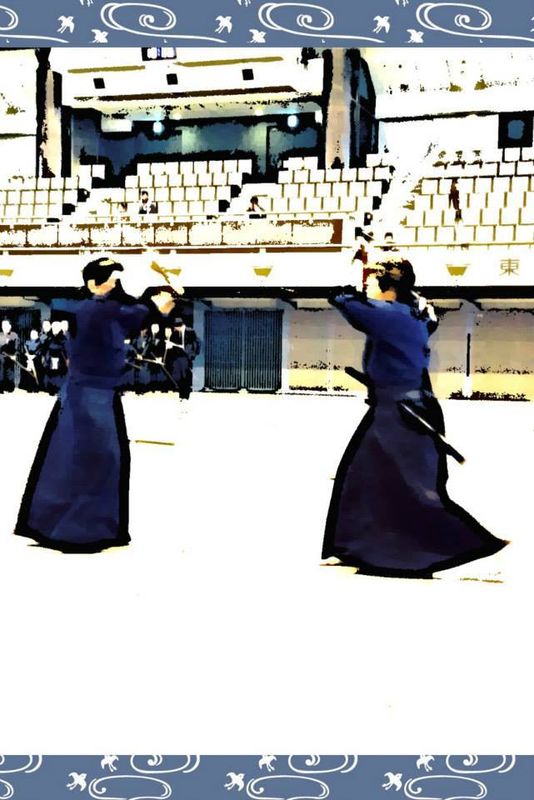May 11, 2023
A Window Into Martial Arts

Niten ichiryu sword style demonstrated by two women practitioners at Tokyo Budokan
My journey into Japanese martial arts has been at times weird and challenging, yet enriching in ways that I couldn’t anticipate. It’s a complex and varied discipline and culture unto itself, both steeped in Japanese tradition and culture yet outside of the everyday.
Ages ago in my home country, Canada, I had brief experiences with Japanese martial arts. Every August in my hometown of Vancouver, there is a summer celebration of Japanese culture, the Powell Street Festival. Dancing, drumming, and food are showcased. What always caught my eye at the event was the glint of the sun on blades and the swish of hakama, divided pants, worn by traditional martial arts practitioners. I was fascinated by the slow and methodical demonstration of Nihon Budo by practitioners of various traditional schools.
On arrival at my assignment on the JET Programme, a local couple introduced me to aikido. The art is very different from the kobudo demonstrations I saw back home but is yet another expression of the Japanese martial spirit. In my one-year stint, I trained as much as I could and participated in testing to earn my first belt in Aikido. I got hooked on the martial culture and wanted to learn more about martial traditions.
You might wonder, do you need to have mastery of the Japanese language for martial arts lessons? Yes and no. First, you need a little foundation in Japanese grammar and vocabulary. I suggest you apply yourself to Japanese language learning for greetings, basic expressions, and syntax. But beyond book learning, martial training is about experiential learning. Those who have exposure to language education may be familiar with TPR - Total Physical Response - a language teaching method that depends on verbal and visual cues to communicate actions. My first experience of martial instruction resembled this approach - teachers explained while demonstrating so I acquired basic vocabulary along with specialized terms.
Finding martial schools could be serendipitous, as I mentioned. However, a more deliberate approach is researching various martial styles online. One source is Budo Japan, a media company that covers a wide range of disciplines in English (and other languages, too) and publishes Hiden, a journal of martial arts.
A martial arts expert gave a glimpse into historic scrolls of dozens of traditional budo schools
If you’re based in Tokyo, you have access to a rich variety of martial sources. Every year in November on Culture Day, Meiji Jingu puts on a festival that includes classical martial arts demonstrations including yabusame, mounted archery, and a flintlock gun tradition. On the shrine grounds is Shiseikan, a dojo that promotes understanding of budo, the martial way, and michi, the way of life. Here, residents take classes in aikido, kenjutsu, kendo, kyudo, and judo.
There are myriad expressions of budo, the martial spirit, in Japan. You might stumble on one in your community, or you might have to put in some effort to find a martial school near you.
The martial way can open windows into the historical culture of Japan and help you discover ways to push your own capacity and make space in your life for Japanese traditions.



0 Comments